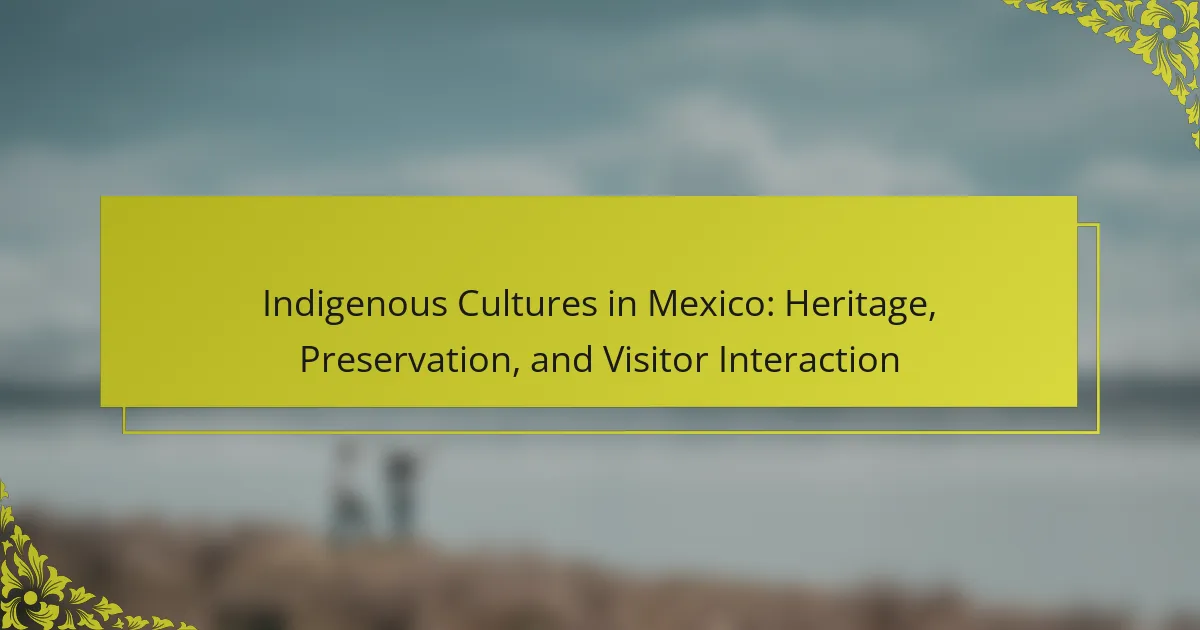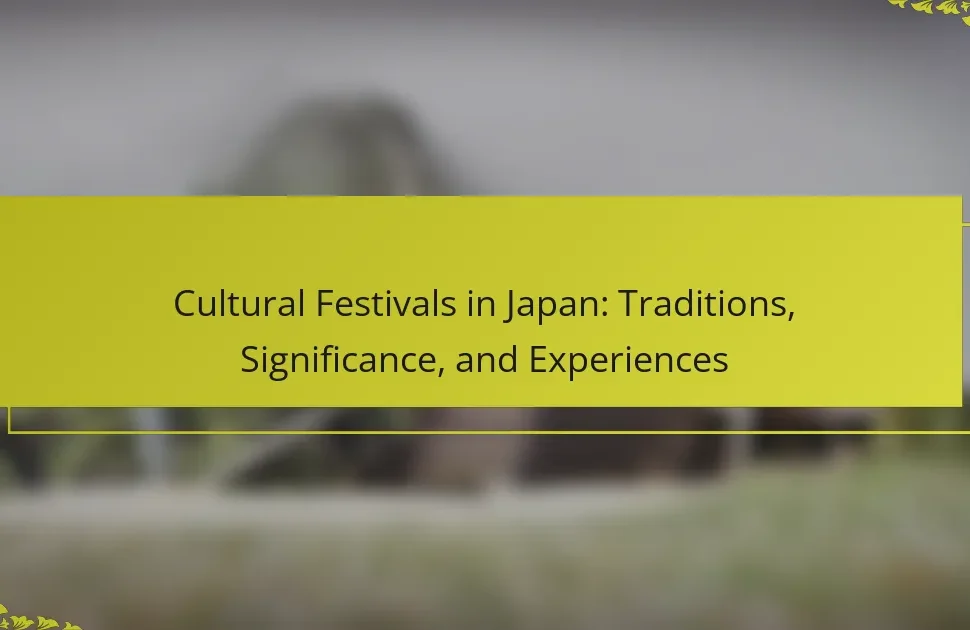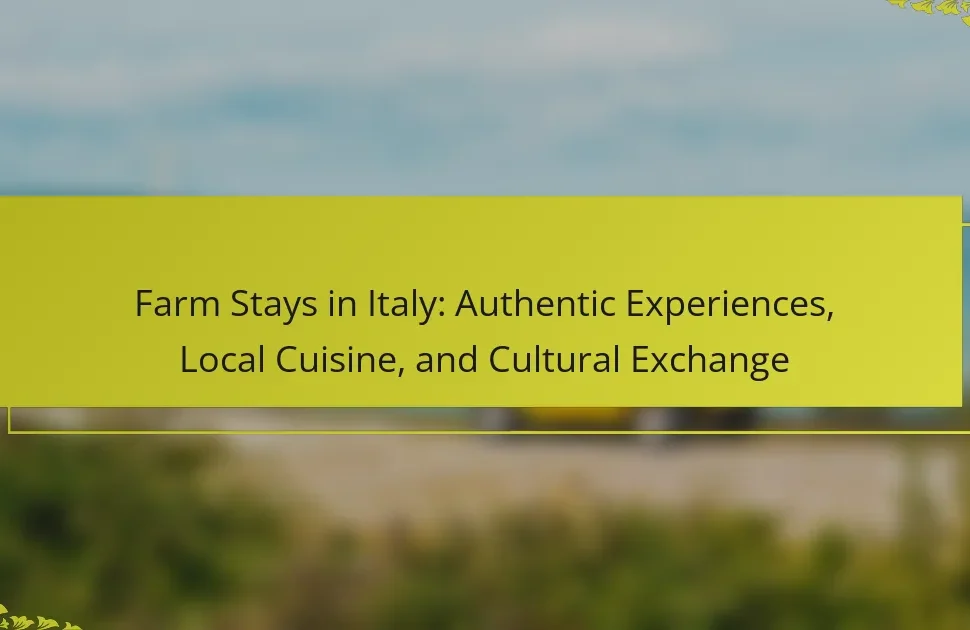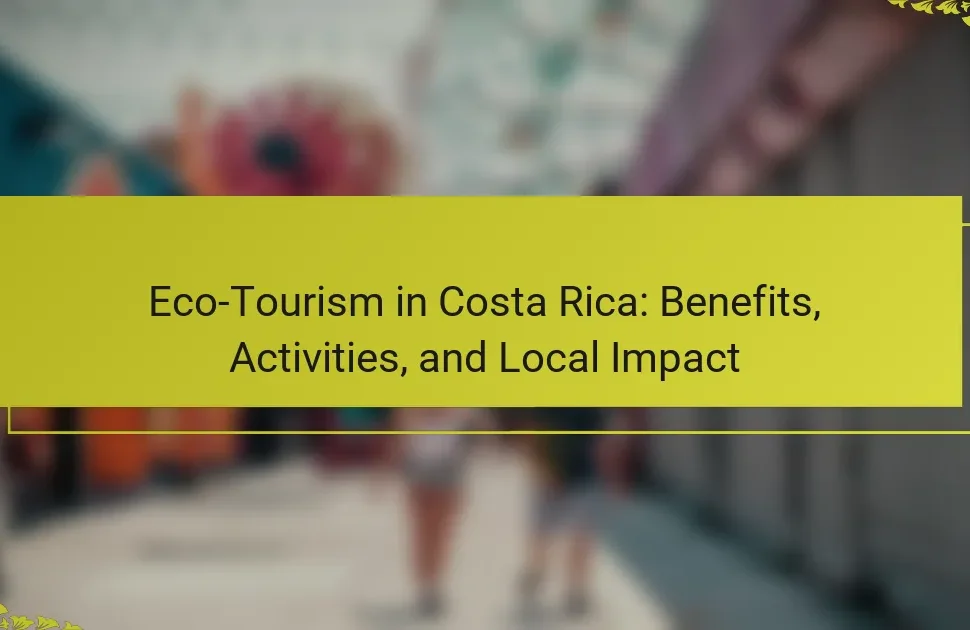Indigenous cultures in Mexico face challenges in preserving their heritage while engaging with visitors. This article explores the significance of these cultures, the threats they encounter, and the efforts for preservation. It also highlights visitor interactions that promote cultural exchange and appreciation, showcasing traditional arts, crafts, and cuisine. Understanding these aspects fosters respect for the rich diversity and resilience of Indigenous communities.
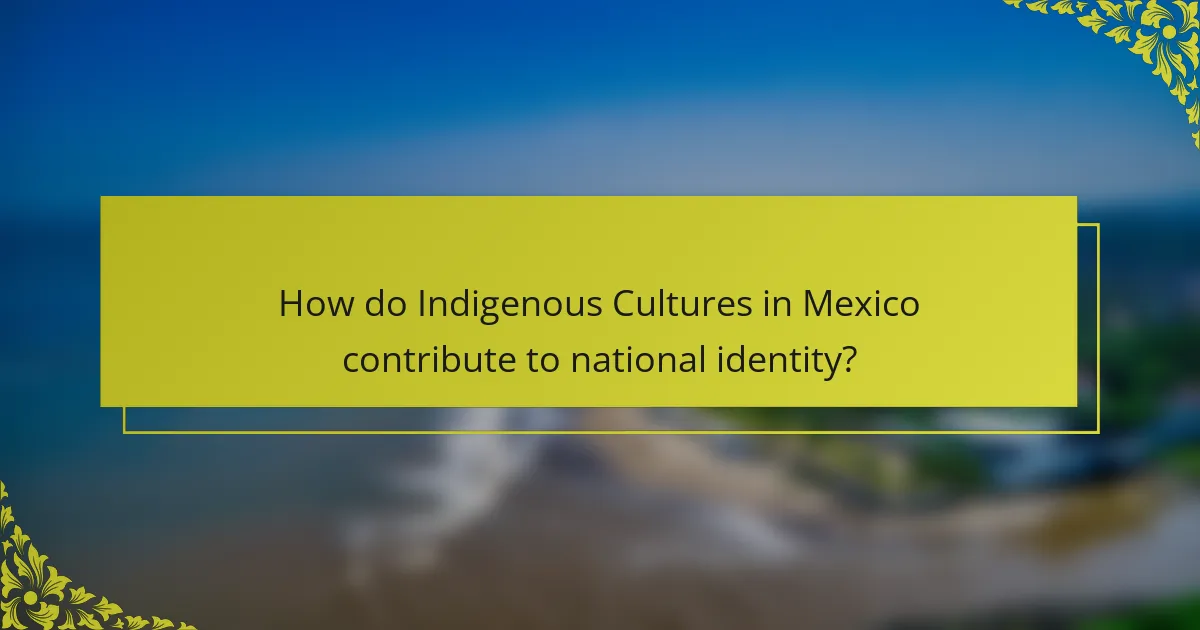
How do Indigenous Cultures in Mexico contribute to national identity?
Indigenous cultures in Mexico significantly shape national identity through their rich heritage, traditions, and contributions to art and language. These cultures foster a sense of belonging and pride among Mexicans. For example, the preservation of languages such as Nahuatl and Maya reflects cultural resilience and diversity. Additionally, festivals like Día de Muertos highlight the fusion of indigenous and modern practices, reinforcing national unity. Indigenous communities also engage with visitors, sharing their customs and traditions, which promotes cultural exchange and awareness. This interaction enhances appreciation for Mexico’s multifaceted identity, rooted in its indigenous heritage.
What are the core values and beliefs shared among Indigenous communities?
Indigenous communities in Mexico share core values centered around respect for nature, community cohesion, and cultural heritage. These beliefs emphasize the interconnectedness of all living things and the importance of preserving traditions.
Respect for the environment is fundamental, as many Indigenous cultures view land as sacred. Community ties are strong, with an emphasis on collective responsibility and support. Cultural heritage is preserved through oral traditions, rituals, and languages, ensuring the transmission of knowledge across generations.
Additionally, many communities advocate for social justice and the recognition of their rights, reflecting a commitment to both cultural and political autonomy. These shared values foster resilience and adaptability in the face of modern challenges.
Which languages are spoken by Indigenous peoples and how do they reflect cultural heritage?
Indigenous peoples in Mexico speak over 60 languages, reflecting diverse cultural heritage. These languages, such as Nahuatl and Maya, embody traditional knowledge, rituals, and community identities. Each language carries unique attributes, like specific vocabulary for local flora and fauna, reinforcing cultural connections. Preservation efforts focus on revitalizing these languages through education and community engagement, ensuring their continued relevance.
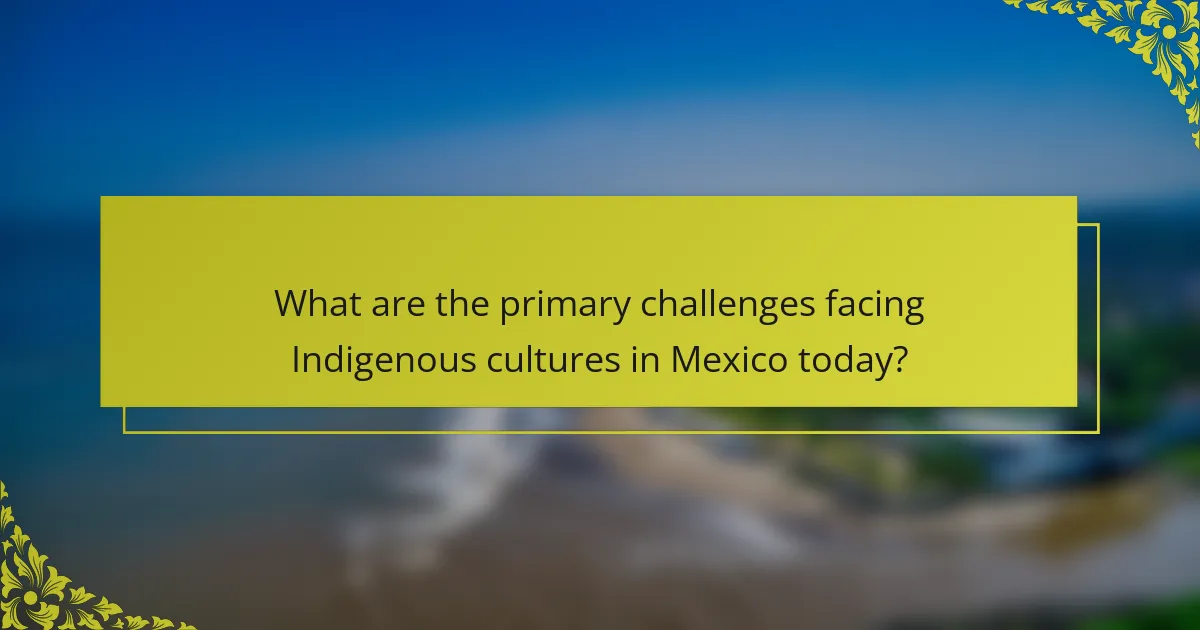
What are the primary challenges facing Indigenous cultures in Mexico today?
Indigenous cultures in Mexico face significant challenges today, including land rights, cultural erosion, and economic marginalization. Land disputes hinder their ability to maintain traditional practices and livelihoods. Preservation of languages and customs is threatened by globalization and urbanization. Additionally, limited access to education and healthcare exacerbates their socio-economic struggles.
How does urbanization impact traditional lifestyles and practices?
Urbanization significantly alters traditional lifestyles and practices of Indigenous cultures in Mexico. As urban areas expand, Indigenous communities face pressure to adapt or abandon their customs and languages.
Urbanization leads to increased migration, often resulting in the erosion of cultural identity. Younger generations may prioritize urban opportunities over traditional practices, diminishing the transmission of heritage.
Additionally, urban development can disrupt sacred sites and natural resources essential for cultural rituals. This loss complicates efforts to preserve Indigenous traditions and knowledge systems.
Visitor interaction can be a double-edged sword; while it raises awareness and provides economic benefits, it can also commodify culture and lead to superficial engagement with Indigenous practices.
What role does government policy play in the preservation of Indigenous cultures?
Government policy plays a crucial role in preserving Indigenous cultures by providing legal frameworks and funding. Policies that recognize Indigenous rights support cultural practices, language revitalization, and land management. For instance, the Mexican government has implemented programs aimed at protecting Indigenous heritage sites and promoting traditional knowledge. These efforts enhance community engagement and visitor interaction, fostering respect for Indigenous cultures. Additionally, policies that encourage educational initiatives help raise awareness about Indigenous histories and contributions, further supporting preservation efforts.
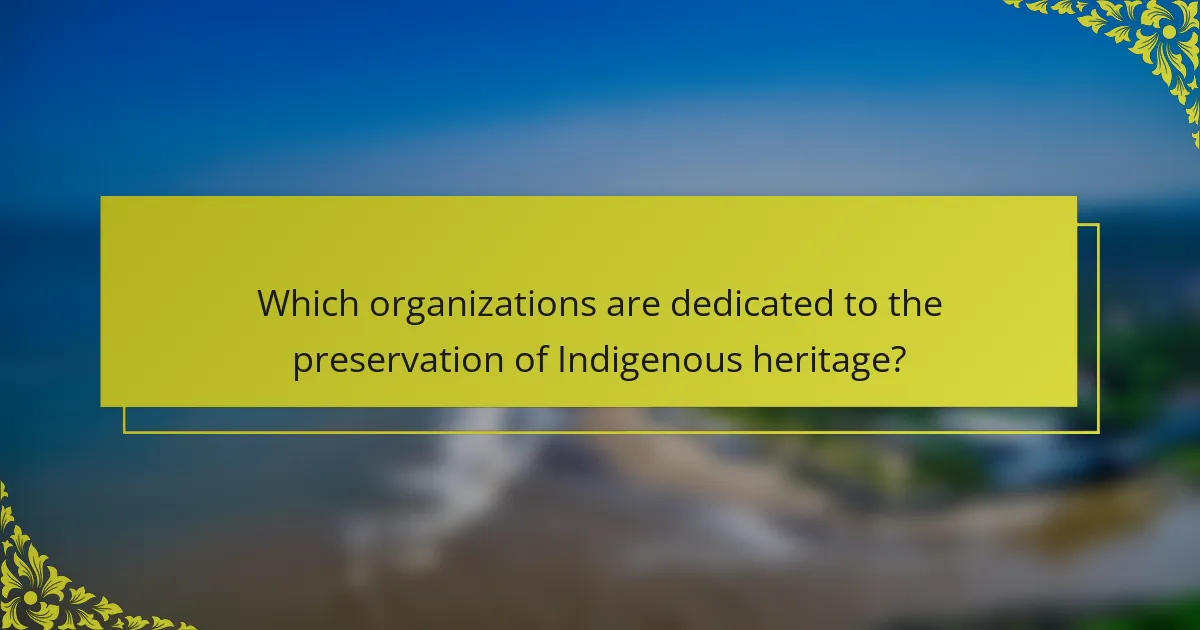
Which organizations are dedicated to the preservation of Indigenous heritage?
Several organizations focus on the preservation of Indigenous heritage in Mexico. Notable examples include the National Institute of Indigenous Peoples, which promotes cultural rights, and the Mexican National Commission for the Development of Indigenous Peoples, which supports community initiatives. Additionally, the Maya Cultural Foundation works to protect the cultural heritage of the Maya communities. The Cultural Heritage Conservation Program plays a crucial role in safeguarding traditional practices and languages. Lastly, the Indigenous Peoples’ Rights Program advocates for policy changes to enhance Indigenous rights and heritage preservation.
How do these organizations collaborate with local communities?
Organizations collaborate with local communities by fostering partnerships that enhance cultural preservation. They engage in initiatives that promote traditional practices, support local artisans, and facilitate educational programs. For example, workshops are organized to teach indigenous crafts, ensuring knowledge transfer across generations. These collaborations often result in increased community participation and empowerment, highlighting the unique attributes of indigenous cultures. As a result, local communities benefit from economic opportunities while preserving their heritage.
What initiatives have shown success in cultural preservation?
Successful initiatives in cultural preservation of Indigenous cultures in Mexico include community-led programs, government support, and collaborations with NGOs. These efforts focus on language revitalization, traditional art forms, and sustainable tourism.
Community-led programs empower local populations to maintain their heritage through workshops and cultural events. Government support includes funding for cultural education and infrastructure improvements. Collaborations with NGOs facilitate resource sharing and expertise, enhancing the effectiveness of preservation efforts.
For example, the “Cultural Heritage and Sustainable Tourism” initiative promotes eco-friendly tourism that respects Indigenous traditions while generating income. As a result, these initiatives foster pride, cultural continuity, and economic sustainability in Indigenous communities.
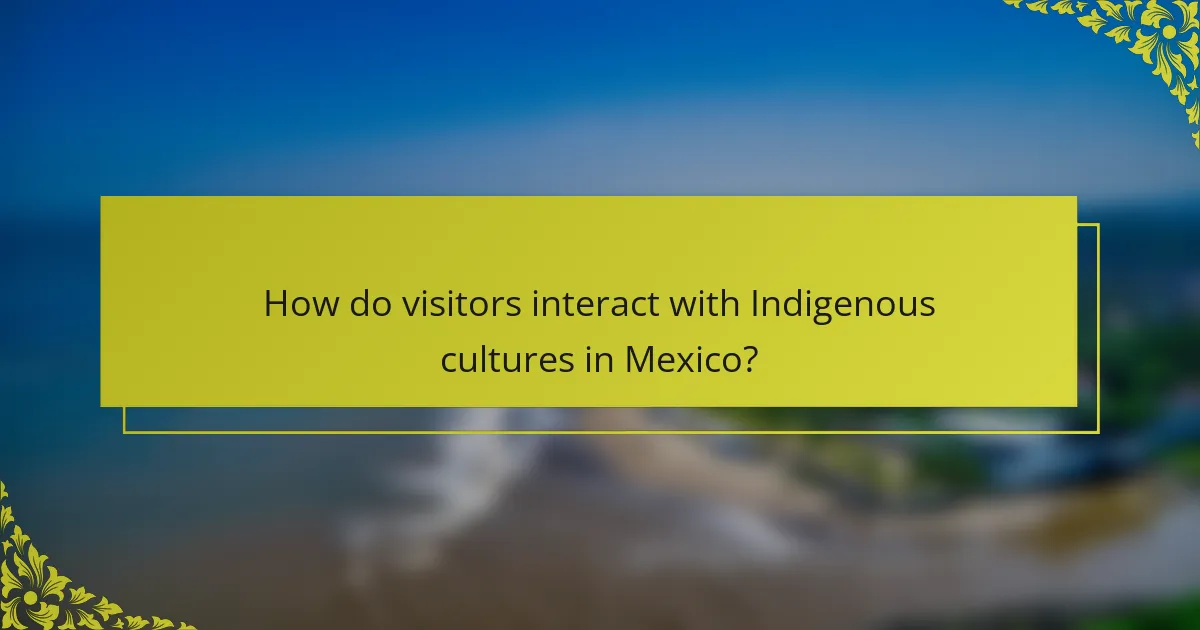
How do visitors interact with Indigenous cultures in Mexico?
Visitors interact with Indigenous cultures in Mexico through cultural experiences, educational programs, and community engagement. These interactions promote understanding and appreciation of diverse traditions.
Cultural experiences include attending festivals, participating in traditional ceremonies, and exploring artisan markets. Educational programs often involve workshops on local crafts, language, and history. Community engagement allows visitors to collaborate on preservation efforts and support local initiatives.
Such interactions contribute to the preservation of Indigenous heritage, fostering respect for unique attributes like traditional knowledge and sustainable practices. These experiences can enhance visitors’ awareness of the challenges faced by Indigenous communities, promoting advocacy and support for their rights.
What are the ethical considerations for tourists engaging with Indigenous communities?
Tourists engaging with Indigenous communities must consider respect, consent, and cultural sensitivity. Ethical interactions promote understanding and support community autonomy. Tourists should avoid appropriation and prioritize local voices in their experiences. Building relationships based on trust fosters sustainable tourism and cultural preservation.
How can visitors support sustainable tourism practices?
Visitors can support sustainable tourism practices by respecting indigenous cultures and engaging in responsible tourism. They should prioritize local businesses, participate in cultural experiences, and educate themselves about the heritage and traditions of the communities they visit. Supporting initiatives that promote preservation of indigenous languages and crafts also contributes to sustainability. Additionally, visitors can minimize their environmental impact by following guidelines set by local communities and participating in conservation efforts. Engaging with indigenous leaders fosters mutual respect and understanding, enhancing the overall experience for both visitors and locals.
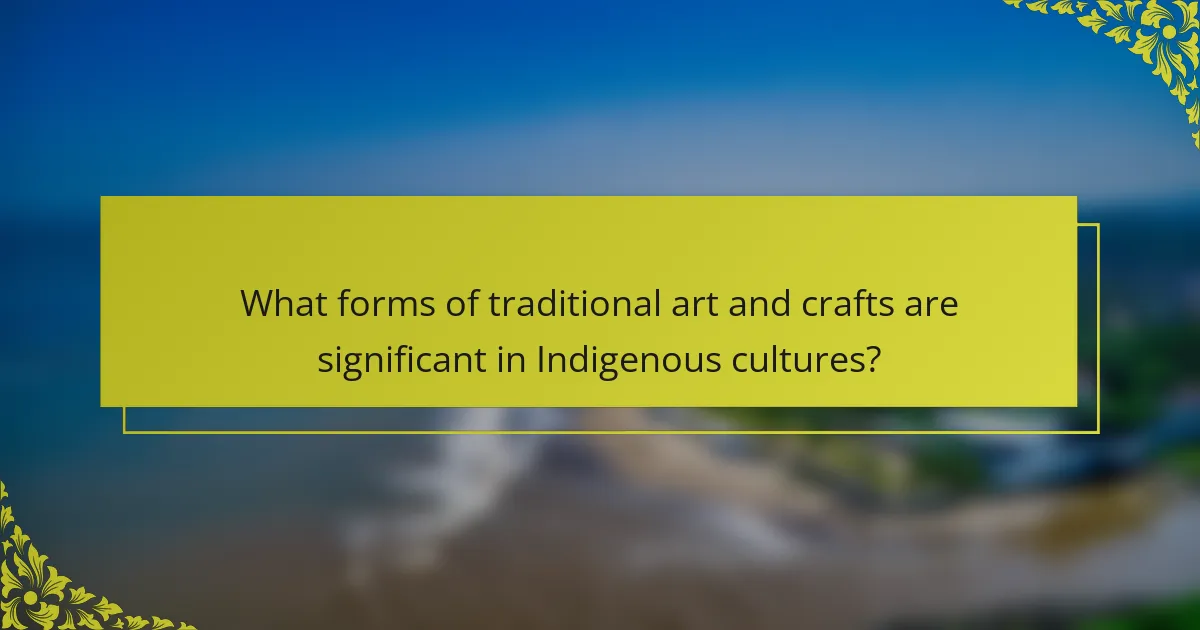
What forms of traditional art and crafts are significant in Indigenous cultures?
Significant forms of traditional art and crafts in Indigenous cultures of Mexico include pottery, weaving, and beadwork. These crafts reflect cultural identity and heritage.
Pottery is often characterized by unique designs and techniques specific to each community. Weaving, particularly textiles, showcases intricate patterns and vibrant colors, often using natural dyes. Beadwork is notable for its detailed craftsmanship, often used in jewelry and ceremonial items.
These art forms not only preserve cultural traditions but also engage visitors through workshops and exhibitions, fostering appreciation and understanding of Indigenous heritage.
How do these art forms convey cultural narratives and history?
Indigenous art forms in Mexico convey cultural narratives and history through symbolism and storytelling. These expressions reflect community values, traditions, and historical events. For example, textiles often incorporate motifs representing local myths and ancestral connections. Pottery designs may illustrate significant historical occurrences, preserving collective memory. Additionally, dance and music serve as dynamic mediums for sharing oral histories, fostering cultural continuity. Overall, these art forms play a crucial role in maintaining and communicating the rich heritage of Indigenous cultures.
Which regions are known for specific Indigenous crafts and what makes them unique?
Regions known for specific Indigenous crafts in Mexico include Oaxaca, Chiapas, Michoacán, and Yucatán. Each region showcases unique techniques and materials that reflect their cultural heritage.
Oaxaca is famous for its intricate textiles and pottery, often featuring vibrant colors and traditional patterns. Chiapas is known for its handwoven fabrics and unique jade carvings, which carry significant cultural symbolism. Michoacán specializes in artisan-made wooden crafts, particularly the colorful “La Nueva Jerusalen” style. Yucatán is recognized for its unique hammocks and pottery, incorporating ancient Mayan techniques.
These crafts not only preserve Indigenous traditions but also provide economic opportunities for local communities.
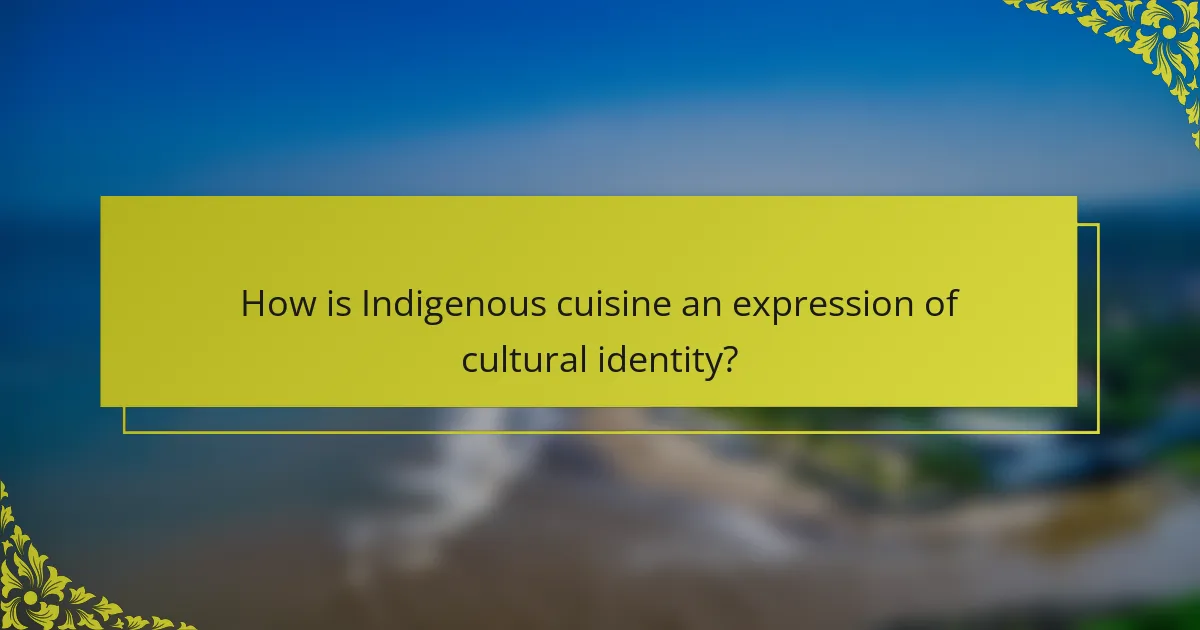
How is Indigenous cuisine an expression of cultural identity?
Indigenous cuisine serves as a vital expression of cultural identity by reflecting traditions, history, and social practices. It encompasses unique ingredients, preparation methods, and communal eating rituals that convey the values and beliefs of Indigenous peoples. For instance, the use of native crops like corn, beans, and squash illustrates a deep connection to ancestral lands and agricultural practices. Additionally, culinary techniques passed down through generations preserve language and storytelling, reinforcing cultural continuity. This cuisine not only nourishes but also fosters community ties and cultural pride, making it a living testament to Indigenous heritage.
What are the key ingredients and cooking methods used in traditional dishes?
Traditional dishes in Indigenous cultures of Mexico feature key ingredients like corn, beans, and chili peppers, often cooked using methods such as nixtamalization and steaming. These ingredients are foundational to the cuisine, reflecting the cultural heritage and agricultural practices of the communities. Cooking methods, including the use of clay pots and open-fire grilling, enhance the flavors and preserve traditional techniques. Unique attributes like the use of local herbs and spices contribute to the distinct regional variations in these dishes.
How do culinary practices vary among different Indigenous groups?
Culinary practices among Indigenous groups in Mexico vary significantly, reflecting their unique cultural heritage. Each group utilizes local ingredients and traditional cooking methods, resulting in diverse flavors and dishes. For example, the Maya often incorporate maize and beans, while the Zapotecs emphasize herbs and spices unique to their region. Additionally, preparation techniques, such as nixtamalization of corn, showcase distinctive practices that enhance nutritional value. These culinary traditions are crucial for cultural preservation and community identity, highlighting the richness of Mexico’s Indigenous cultures.
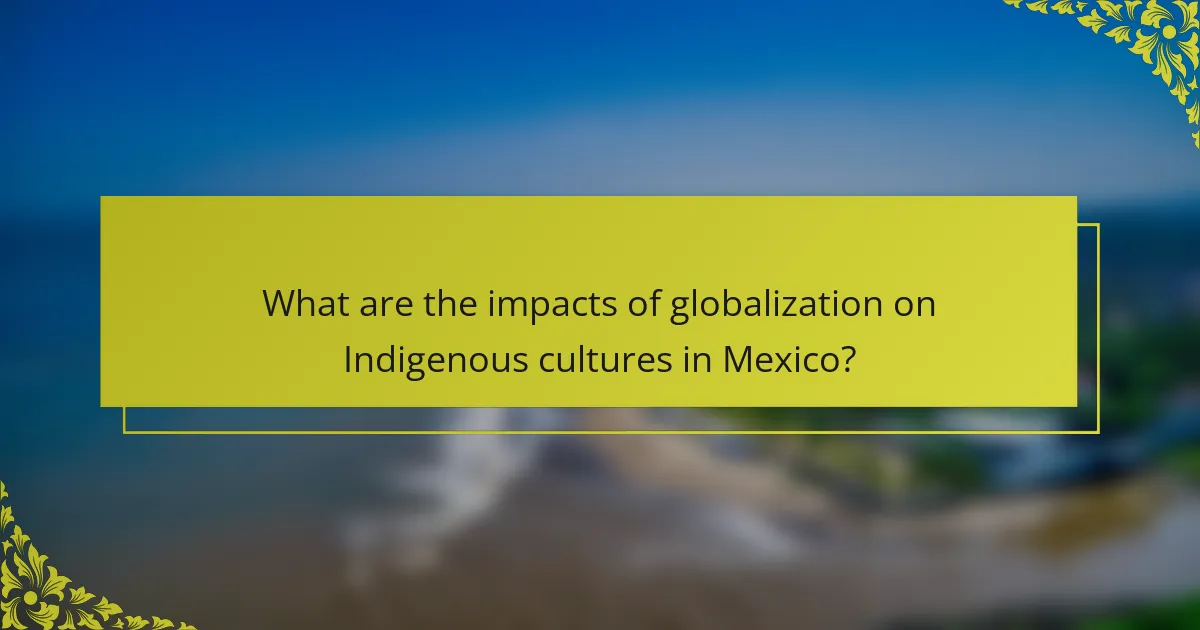
What are the impacts of globalization on Indigenous cultures in Mexico?
Globalization significantly impacts Indigenous cultures in Mexico by promoting cultural exchange while also threatening traditional practices. These cultures face challenges such as loss of language, erosion of customs, and increased commercialization of their heritage. As a result, Indigenous communities often struggle to maintain their identity amidst external influences. Additionally, the influx of tourism can lead to both opportunities for economic development and risks of cultural appropriation. Preservation efforts are essential to safeguard their unique attributes, such as traditional crafts and languages, which are vital for cultural continuity.
How do contemporary Indigenous artists fuse tradition with modern influences?
Contemporary Indigenous artists blend tradition with modern influences by incorporating cultural motifs into innovative mediums. This fusion reflects their heritage while addressing contemporary themes. For instance, artists use digital technology to reinterpret traditional narratives, creating a dialogue between past and present. This approach not only preserves cultural identity but also engages broader audiences, enhancing appreciation for Indigenous cultures in Mexico.
What are the risks and benefits of cultural exchange in a globalized world?
Cultural exchange in a globalized world presents both risks and benefits for indigenous cultures in Mexico. Benefits include increased awareness and appreciation of heritage, leading to preservation efforts. Risks involve cultural appropriation and loss of authenticity.
Visitor interaction can support economic development, but it may also lead to the commodification of traditions. Effective management is essential to balance these dynamics, ensuring that indigenous voices guide cultural exchange initiatives.
What strategies can be employed to protect Indigenous knowledge in the face of globalization?
Employing strategies to protect Indigenous knowledge amid globalization involves collaboration, legal frameworks, and education. Collaborative efforts with Indigenous communities ensure their voices are central in decision-making. Legal frameworks, such as intellectual property rights, can safeguard traditional knowledge from exploitation. Education initiatives raise awareness about the importance of Indigenous cultures and their contributions, fostering respect and understanding among visitors and the broader society. These strategies collectively enhance the preservation of Indigenous heritage in Mexico.
What best practices should visitors follow to respectfully engage with Indigenous cultures?
Visitors should approach Indigenous cultures with respect and openness. Engage with local communities, learn about their traditions, and seek permission before taking photographs or participating in rituals. Prioritize authentic experiences that support cultural preservation. Consider the following best practices:
1. Educate yourself about the history and significance of Indigenous cultures.
2. Support local artisans by purchasing handmade crafts directly from them.
3. Attend cultural events or workshops that promote community involvement.
4. Listen actively to community members and respect their perspectives.
5. Avoid stereotypes and generalizations about Indigenous peoples.
6. Be mindful of cultural sensitivities and practices during your visit.
